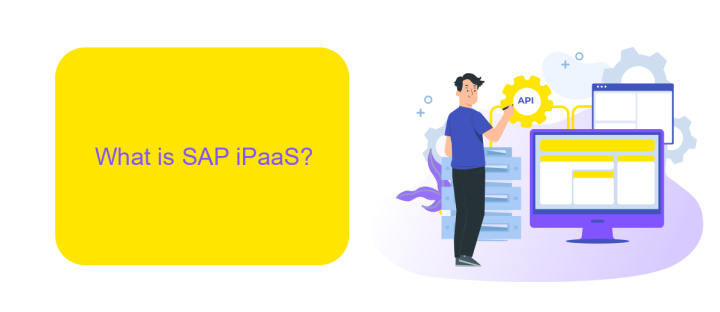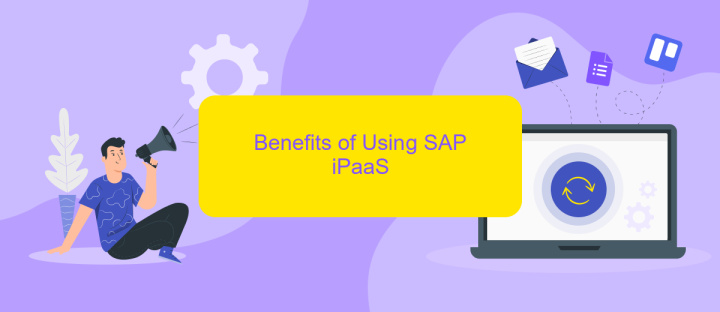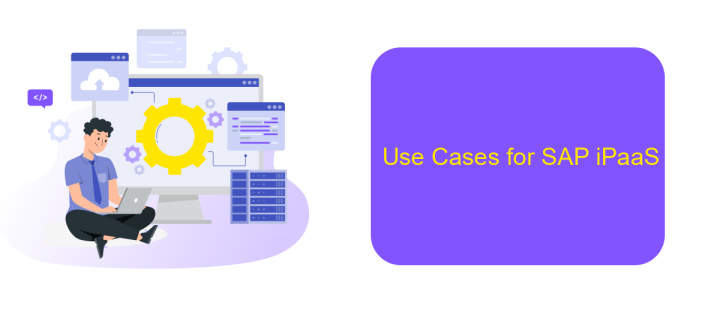iPaaS SAP
In today's rapidly evolving digital landscape, businesses require seamless integration of diverse applications and data sources to drive efficiency and innovation. SAP's Integration Platform as a Service (iPaaS) offers a robust solution, enabling organizations to connect, manage, and optimize their IT ecosystems effortlessly. This article explores the key features, benefits, and real-world applications of SAP iPaaS, highlighting its role in modern enterprise integration.
Introduction
In today's fast-paced digital landscape, businesses increasingly rely on seamless integration of various applications and services to maintain operational efficiency. Integration Platform as a Service (iPaaS) solutions like SAP have emerged as vital tools for achieving this connectivity. SAP's iPaaS offers a robust framework for integrating diverse systems, ensuring smooth data flow and enhancing business processes.
- Streamlined integration of cloud and on-premise applications
- Enhanced data synchronization and real-time analytics
- Scalable architecture to accommodate growing business needs
- Comprehensive security features to protect sensitive data
One notable service aiding in these integrations is ApiX-Drive, which simplifies the process of connecting various applications without requiring extensive coding expertise. By leveraging tools like SAP iPaaS and ApiX-Drive, businesses can significantly reduce the complexity and time involved in setting up integrations, allowing them to focus more on their core activities and strategic goals.
What is SAP iPaaS?

SAP iPaaS (Integration Platform as a Service) is a cloud-based solution designed to streamline and simplify the integration of various applications and data across an enterprise. It provides a unified platform where businesses can connect on-premise and cloud-based systems, ensuring seamless data flow and process automation. By leveraging SAP iPaaS, companies can reduce the complexity and cost associated with traditional integration methods, while also enhancing scalability and flexibility.
One of the key features of SAP iPaaS is its ability to support a wide range of integration scenarios, from simple data transfers to complex workflows. It offers pre-built connectors and templates, along with tools for custom integration development. Services like ApiX-Drive can complement SAP iPaaS by providing additional capabilities for automating integrations without the need for extensive coding. This combination allows businesses to quickly adapt to changing requirements and maintain a high level of operational efficiency.
Benefits of Using SAP iPaaS

SAP Integration Platform as a Service (iPaaS) offers numerous benefits for businesses looking to streamline their operations and enhance their data integration processes. By leveraging SAP iPaaS, organizations can achieve seamless connectivity across various applications and systems, ensuring real-time data flow and improved operational efficiency.
Here are some key benefits of using SAP iPaaS:
- Enhanced Connectivity: SAP iPaaS enables seamless integration between on-premises and cloud applications, facilitating smooth data exchange and improving overall business agility.
- Scalability: The platform supports scalable integration solutions, allowing businesses to grow and adapt their integration needs without significant changes to their infrastructure.
- Cost Efficiency: By reducing the need for manual data entry and minimizing integration errors, SAP iPaaS helps businesses save time and reduce operational costs.
- Real-time Data Processing: With real-time data synchronization, organizations can make informed decisions quickly, enhancing their responsiveness to market changes.
- User-Friendly Interface: SAP iPaaS offers an intuitive interface, making it easier for users to configure and manage integrations without extensive technical expertise. Services like ApiX-Drive can further simplify this process by providing pre-built connectors and automation tools.
In conclusion, SAP iPaaS provides a robust and flexible solution for businesses seeking to optimize their integration processes. By leveraging its capabilities, organizations can achieve greater efficiency, scalability, and cost savings, ultimately driving better business outcomes.
Use Cases for SAP iPaaS

SAP iPaaS (Integration Platform as a Service) offers a versatile solution for businesses looking to streamline their operations through seamless integration of various applications and services. By leveraging this platform, organizations can achieve enhanced connectivity, improved data flow, and greater operational efficiency.
One of the primary use cases for SAP iPaaS is the integration of disparate systems within an enterprise. This includes connecting ERP systems, CRM platforms, and other business applications to ensure data consistency and real-time information exchange. Additionally, SAP iPaaS can be used to integrate cloud-based services with on-premises systems, providing a hybrid integration solution that meets the needs of modern enterprises.
- Automating data synchronization between different business applications
- Facilitating seamless communication between cloud and on-premises systems
- Enhancing customer experience by integrating CRM and ERP systems
- Streamlining supply chain operations through integrated logistics platforms
- Enabling real-time analytics by connecting data sources across the organization
Tools like ApiX-Drive can further enhance the capabilities of SAP iPaaS by providing easy-to-use interfaces for setting up and managing integrations. With ApiX-Drive, businesses can automate workflows, reduce manual data entry, and ensure that all systems are working in harmony, ultimately leading to improved productivity and better decision-making.
Conclusion
In conclusion, the iPaaS SAP platform offers a robust and scalable solution for businesses looking to streamline their integration processes. Its comprehensive suite of tools and services enables seamless connectivity between various applications, ensuring efficient data flow and operational consistency. By leveraging iPaaS SAP, companies can significantly reduce the complexity and costs associated with traditional integration methods, thus enhancing their overall productivity and agility.
Furthermore, integrating with third-party services like ApiX-Drive can further enhance the capabilities of iPaaS SAP. ApiX-Drive provides an intuitive interface for setting up and managing integrations, allowing users to automate workflows without the need for extensive coding knowledge. This synergy between iPaaS SAP and ApiX-Drive not only simplifies the integration process but also empowers businesses to quickly adapt to changing market demands. Ultimately, adopting these advanced integration solutions positions companies for sustained growth and competitive advantage in the digital landscape.
- Automate the work of an online store or landing
- Empower through integration
- Don't spend money on programmers and integrators
- Save time by automating routine tasks
FAQ
What is iPaaS in the context of SAP?
How does iPaaS enhance SAP integration?
What are the key benefits of using iPaaS for SAP integration?
Can iPaaS be used for both on-premises and cloud-based SAP systems?
What tools or services can assist with automating and configuring integrations in iPaaS for SAP?
Strive to take your business to the next level, achieve your goals faster and more efficiently? Apix-Drive is your reliable assistant for these tasks. An online service and application connector will help you automate key business processes and get rid of the routine. You and your employees will free up time for important core tasks. Try Apix-Drive features for free to see the effectiveness of the online connector for yourself.


